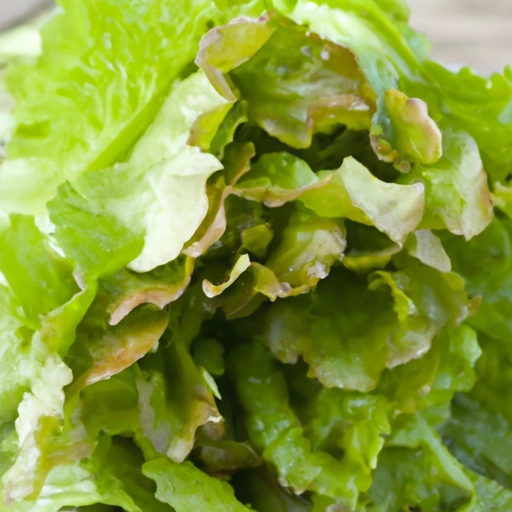Leaf Lettuce
Description

Leaf lettuce is a variety of lettuce with tender, large, and loosely bunched leaves. It is known for its mild flavor and crisp texture, which makes it a favorite among fresh salads and garnishes. Unlike iceberg lettuce, its leaves are more ruffled and maintain a softer texture, which allows it to absorb dressings and vinaigrettes effectively, enhancing the overall flavor of a dish. Leaf lettuce comes in different colors, ranging from deep green to red and reddish-purple, adding a vibrant touch to any culinary creation.
Common uses
Leaf lettuce is commonly used as a base for salads, in sandwiches, wraps, as a garnish for entrees, and as an edible bed for serving various dishes. Its delicate flavor complements a wide range of ingredients without overpowering them.
Nutritional value
Calories
Leaf lettuce is low in calories, with approximately 5 calories per cup (roughly 36 grams or 1.3 ounces).
Protein
It contains around 0.5 grams of protein per cup, contributing to its overall nutritional profile.
Fat
Leaf lettuce is virtually fat-free, with less than 0.1 grams of fat per serving.
Carbohydrates
It has about 1 gram of carbohydrates per cup, the majority of which comes from dietary fiber.
Vitamins
This leafy green is rich in vitamins, particularly vitamin A and vitamin K, which are essential for vision health and blood clotting, respectively.
Minerals
Leaf lettuce provides minerals such as potassium, iron, and calcium, important for maintaining bodily functions.
Health benefits
Regular consumption of leaf lettuce can contribute to hydration, aid in weight management, and support cardiovascular health due to its high water content, low calorie count, and presence of heart-healthy nutrients.
Potential risks
While leaf lettuce is generally safe for consumption, it is important to ensure it is washed thoroughly to remove potential pesticides and pathogens. Certain individuals may need to avoid it due to dietary restrictions or allergies.
Common recipes
Leaf lettuce is featured in Caesar salads, Greek salads, BLT sandwiches, and as a topping for tacos and burgers.
Cooking methods
It is best when consumed raw to preserve its texture and nutritional value, but it can also be briefly wilted for a warm salad or as a garnish.
Pairing with other ingredients
Leaf lettuce pairs well with a variety of dressings, from creamy ranch to tangy vinaigrettes. It also complements fruits, nuts, cheeses, and proteins such as chicken, fish, and tofu.
Summary
Leaf lettuce is a versatile and nutritious leafy green that can be incorporated into a wide array of dishes. Its low-calorie content paired with essential nutrients makes it a beneficial addition to a balanced diet. With its historical roots in ancient civilizations and its presence in modern kitchens around the globe, leaf lettuce continues to be a favorite for its culinary flexibility and health advantages.